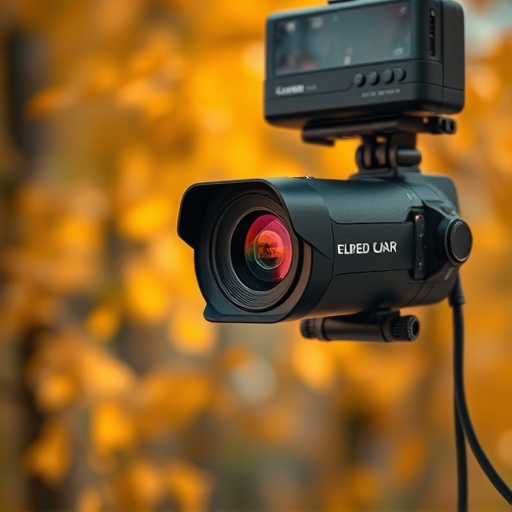Creating Most Realistic Looking Security Decoys is crucial in modern surveillance tactics for minimizing detection risks. For outdoor setups, select camo patterns inspired by forest or desert landscapes with earthy tones, while indoor applications benefit from subtle textures and neutral hues. Integrating reflective surfaces further enhances camouflage by breaking up shadows and reflecting light like natural elements. Advanced materials like synthetic fabrics and 3D printing technologies offer unprecedented authenticity, ensuring discreet operation and boosting success rates in surveillance missions.
“Surveillance equipment camouflage has evolved into an art, employing advanced techniques to create the most realistic-looking security decoys. This comprehensive guide explores innovative methods to blend surveillance technology seamlessly with its surroundings. From choosing materials that match textures and colors to innovative design strategies mimicking natural elements, we delve into ensuring effective deception. Additionally, learn about strategic deployment and maintenance tips for longevity and authenticity, making your decoys the most realistic-looking security measures.”
- Choosing Materials for Realistic Camouflage
- – Discussing the importance of texture and color in blending with surroundings
- – Reviewing advanced materials used for decoy surveillance equipment
Choosing Materials for Realistic Camouflage
When it comes to choosing materials for surveillance equipment camouflage, the goal is to select items that blend seamlessly with their surroundings. Opting for materials with natural textures and colours that mimic the environment is key. For outdoor setups, consider using camo patterns inspired by forest or desert landscapes, incorporating earthy tones like greens, browns, and beiges. These decoys not only look realistic but also effectively hide cameras, sensors, and other devices from casual observation.
For indoor applications, materials with subtle textures and neutral hues can help security equipment blend into the background. Velour, felt, or cloth coverings can provide a more discreet look, while still allowing for necessary adjustments and access. Additionally, using reflective surfaces strategically can enhance overall camouflage by breaking up shadows and reflecting light in ways that mimic natural elements, making surveillance gear nearly invisible to the untrained eye.
– Discussing the importance of texture and color in blending with surroundings
In the realm of surveillance equipment, achieving seamless camouflage is paramount for effective operation and reducing detection risks. Texture and color play a pivotal role in creating the most realistic-looking security decoys. The use of materials that mimic natural environments, such as foliage, rocks, or even man-made structures, allows these decoys to blend seamlessly into their surroundings, making them nearly invisible to the naked eye.
Color coordination is another critical aspect. Decoys should be painted with colors that match the local environment—whether it’s the earthy tones of a forest floor or the monotone hues of an urban setting. This meticulous attention to detail ensures that surveillance equipment can operate discreetly, enhancing operational success and maintaining the element of surprise.
– Reviewing advanced materials used for decoy surveillance equipment
In the realm of modern surveillance, one of the most effective strategies involves the use of advanced materials for decoy equipment, designed to fool even the keenest eyes. These materials play a pivotal role in creating the most realistic-looking security decoys, significantly enhancing the overall security posture. From hyper-realistic synthetic fabrics that mimic various textures to cutting-edge 3D printing technologies, these innovative solutions offer an unprecedented level of authenticity.
Each material is meticulously crafted to replicate the appearance and behavior of genuine surveillance devices, from cameras to sensors. For instance, advanced polymer composites can be shaped to look like metal or plastic components, while specialized coatings and paints enable a perfect match for different environments, ensuring the decoys blend seamlessly into their surroundings. This advanced camouflage not only deters potential intruders but also provides crucial time and resources for real surveillance equipment to operate effectively.
In the ever-evolving landscape of security, the most realistic-looking security decoys are not just tools but strategic elements that can significantly enhance surveillance techniques. By understanding the art of choosing materials and employing advanced camouflage techniques, professionals can effectively blend equipment with their surroundings, making it easier to detect potential threats while maintaining a low profile. Investing in innovative decoy technology is a step towards revolutionizing how we navigate security in today’s digital era.
